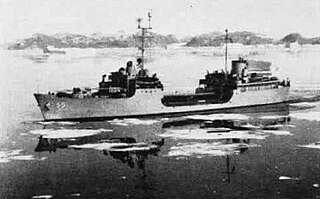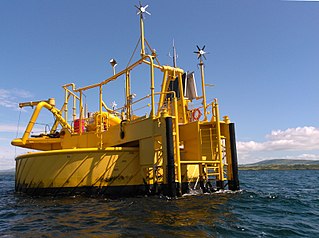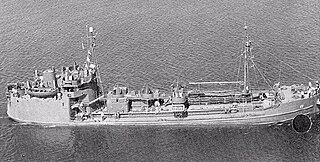
An oil platform is a large structure with facilities to extract and process petroleum and natural gas that lie in rock formations beneath the seabed. Many oil platforms will also have facilities to accommodate the workers, although it is also common to have a separate accommodation platform linked by bridge to the production platform. Most commonly, oil platforms engage in activities on the continental shelf, though they can also be used in lakes, inshore waters, and inland seas. Depending on the circumstances, the platform may be fixed to the ocean floor, consist of an artificial island, or float. In some arrangements the main facility may have storage facilities for the processed oil. Remote subsea wells may also be connected to a platform by flow lines and by umbilical connections. These sub-sea facilities may include one or more subsea wells or manifold centres for multiple wells.

The Statfjord oil field is a large oil and gas field covering 580 km2 in the U.K.-Norwegian boundary of the North Sea at a water depth of 145 m, discovered in 1974 by Mobil and since 1987 operated by Equinor.

USS Guadalupe (AO-32), a Cimarron-class fleet replenishment oiler that served in the United States Navy, it was named for the Guadalupe River in Texas.
BW Offshore Limited is a global owner and operator of floating production storage and offloading (FPSO) vessels. The company is listed on Oslo Stock Exchange. The company has its headquarters in Singapore and Oslo, Norway but operates internationally. The largest owner is BW Group Limited with 49.3% of the shares.
The Trans-Caspian Oil Transport System is a proposed project to transport oil through the Caspian Sea from Kazakhstani Caspian oilfields to Baku in Azerbaijan for the further transportation to the Mediterranean or Black Sea coast. The main options under consideration are an offshore oil pipeline from Kazakhstan to Azerbaijan, and construction of oil terminals and oil tankers fleet. A strong push for the project has been from the partners of the Kashagan oilfield project and in particular Total who has a share in both the field and the BTC pipeline. They have estimated that such a project would cost roughly US$4 billion. The project also faces opposition from Iran and Russia, both alternative avenues for Kazakhstan's oil and gas who would likely object to competing pipelines being built.

The USS Manatee (AO-58)—the second vessel of the United States Navy to bear the name—was a Cimarron-class fleet replenishment oiler named for a river in Florida. Cimarron-class oilers were named after American rivers in the southern United States.

The Battle of the Caribbean refers to a naval campaign waged during World War II that was part of the Battle of the Atlantic, from 1941 to 1945. German U-boats and Italian submarines attempted to disrupt the Allied supply of oil and other material. They sank shipping in the Caribbean Sea and the Gulf of Mexico and attacked coastal targets in the Antilles. Improved Allied anti-submarine warfare eventually drove the Axis submarines out of the Caribbean region.

The Douglas Complex is a 54-metre (177 ft) high system of three linked platforms in the Irish Sea, 24 kilometres (15 mi) off the North Wales coast. The Douglas oil field was discovered in 1990, and production commenced in 1996. Now operated by Eni, the complex consists of the wellhead platform, which drills into the seabed, a processing platform, which separates oil, gas and water, and thirdly an accommodation platform, which is composed of living quarters for the crew. This accommodation module was formerly the Morecambe Flame jack-up drilling rig.

USS Nespelen (AOG-55) was a Patapsco-class gasoline tanker in the service of the United States Navy.

The Sullom Voe Terminal is an oil and gas terminal at Sullom Voe in the Shetland Islands of Scotland. It handles production from oilfields in the North Sea and East Shetland Basin and stores oil before it is transported by tanker.

A Single buoy mooring (SrM) is a loading buoy anchored offshore, that serves as a mooring point and interconnect for tankers loading or offloading gas or liquid products. SPMs are the link between geostatic subsea manifold connections and weathervaning tankers. They are capable of handling any tonnage ship, even very large crude carriers (VLCC) where no alternative facility is available.

An oil tanker, also known as a petroleum tanker, is a ship designed for the bulk transport of oil or its products. There are two basic types of oil tankers: crude tankers and product tankers. Crude tankers move large quantities of unrefined crude oil from its point of extraction to refineries. Product tankers, generally much smaller, are designed to move refined products from refineries to points near consuming markets.

A marine loading arm, also known as a mechanical loading arm, loading arm, or MLA is a mechanical arm consisting of articulated steel pipes that connect a tankship such as an oil tanker or chemical tanker to a cargo terminal. Genericized trademarks such as Chiksan are often used to refer to marine loading arms.

The FPSO Noble Seillean was a dynamically positioned floating oil production, storage and offloading vessel.
Knutsen OAS Shipping is a privately owned shipping company located in Haugesund, Norway. The company has a fleet of purpose-built shuttle tankers, chemical carriers and product tankers internationally. The fleet consists of 41 shuttle tankers, chemical carriers and product tankers. In 2009 the company had an onshore staff of 64 to handle projects and operation of the fleet, 430 administrative employees offshore and about 800 foreign employees.
A double acting ship is a type of icebreaking ship designed to travel forwards in open water and thin ice, but turn around and proceed astern (backwards) in heavy ice conditions. In this way, the ship can operate independently in severe ice conditions without icebreaker assistance but retain better open water performance than traditional icebreaking vessels.

The T1 tanker or T1 are a class of sea worthy small tanker ships used to transport fuel oil before and during World War II, Korean War and Vietnam War. The T1 tanker classification is still in use today. T1 tankers are about 200 to 250 feet in length and are able to sustain a top speed of about 12 knots. The hull designation AO is used by the US Navy to denote the ship is a T1 oil tanker and AOG that the T1 is a gasoline tanker. The small size allows the T1 to enter just about any sea port or to anchor around a small island, this was very useful during the Pacific War. The T1 tanker can carry about 48,000 to 280,000 bbls. Some T1 tankers were used to transport goods other than oil, a few were used for black oil-crude oil, diesel, chemicals and rarely bulk cargo like grain. T1 tankers are also called liquid cargo carriers. The T1 tanker has about a 6,000 to 35,000 deadweight tonnage (DWT) of cargo. The small size also gives the ships short turn around time for repair, cleaning, loading and unloading. A T1 tanker carrying dirty cargo, like crude oil needs a few weeks of labor to clean before carrying clean cargo. Most T1 ships during World War II were named after major oil fields.

The Flotta oil terminal is a major crude oil reception, processing, storage and export facility on the island of Flotta, in the south of Scapa Flow in the Orkney Islands. It receives and processes crude oil delivered by a subsea pipeline from the Piper, Claymore, Tartan and Golden Eagle platforms and associated fields. The terminal includes facilities for exporting stabilised crude oil by tanker.
The Teesside oil terminal is a major crude oil reception, processing, storage and export facility at Seal Sands, Middlesbrough. It receives and processes crude oil delivered by the subsea NORPIPE pipeline from the Norwegian Ekofisk field and the UK Fulmar and J-Block fields. The terminal includes facilities for exporting stabilised crude oil and liquefied petroleum gases (LPG) by tanker and pipeline.
The Maureen oil field is a partially depleted crude oil field in the UK sector of the central North Sea, 262 km north-east of Aberdeen. Oil was produced from the field reservoir by the Maureen A platform between 1983 and 1999. Proposals to further exploit the residual hydrocarbons in the field have yet to be implemented.














